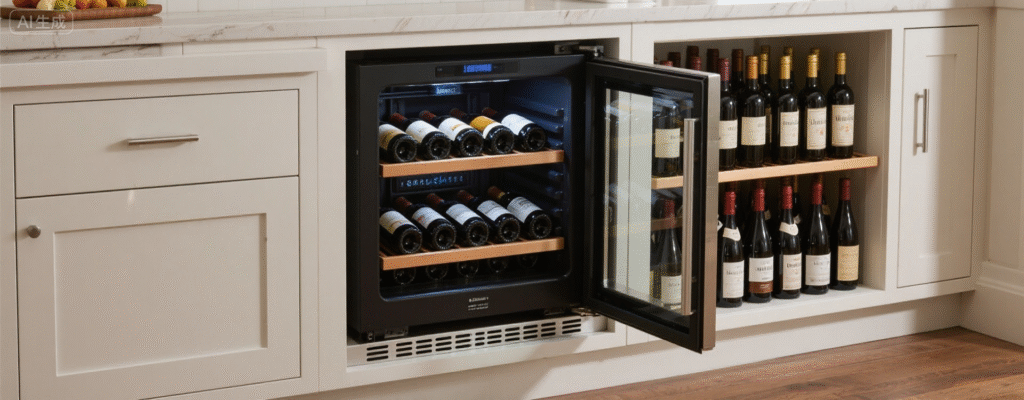Integrating a built in wine refrigerator is a significant upgrade for any kitchen or entertainment space, seamlessly blending storage with style. This article explores the essential considerations for selecting the perfect unit, focusing on the critical factors that go beyond mere aesthetics. We will then guide you through the installation process to ensure your investment enhances both your home’s functionality and value.
The Core Considerations for Your Built-In Cooler
Choosing the right unit involves more than just matching cabinet panels. The first critical decision is temperature zones. A single-zone cooler is cost-effective and ideal for storing a collection of all reds or all whites. However, for connoisseurs with diverse tastes, a dual-zone refrigerator is indispensable, allowing you to store reds at a perfect 55-65°F and whites at a crisper 45-50°F simultaneously. Another vital feature is UV-protected glass. According to a 2019 study by the Journal of Agricultural and Food Chemistry, light exposure, particularly UV rays, can rapidly degrade wine, creating “light-strike” or “goût de lumière,” which produces unpleasant sulfurous odors. Therefore, a door with built-in UV protection is non-negotiable for preserving wine integrity.
Vibration control is another engineering marvel to consider. Traditional compressor systems can create subtle vibrations that disturb the sediment in aging wines, potentially accelerating the aging process negatively. Many premium built in wine refrigerator models now utilize advanced, vibration-dampening compressors or even thermoelectric cooling systems, which are virtually silent and shake-free, providing a stable environment for your finest vintages to mature gracefully.
Seamless Integration and Installation Insights
A successful installation is what truly makes a built in wine refrigerator look like a native part of your kitchen. The process begins with precise measurement; you must account for the unit’s exact height, width, and depth, while also ensuring adequate clearance for ventilation, typically at the front kick-plate or rear, as specified by the manufacturer. Proper airflow is critical—a 2021 report by the Association of Home Appliance Manufacturers (AHAM) emphasized that insufficient clearance is a leading cause of premature appliance failure, as it causes the compressor to overwork.
Beyond the technical specs, integration is about aesthetics. This is where a quality built in undercounter wine cooler shines. Most are designed for front-ventilation, allowing for a truly flush installation without sacrificing cabinet space for side vents. You can often order a custom cabinet panel that matches your existing kitchen doors, which attaches directly to the unit’s front, creating a cohesive and elevated look that hides the appliance entirely. This transforms your wine refrigerator from a mere storage box into a deliberate design statement.
In summary, selecting and installing a built in wine refrigerator requires careful attention to both technical features and design integration. Key elements like temperature zoning, UV protection, and vibration control are essential for preserving your wine’s quality, while precise measurements and proper ventilation ensure long-term performance. By considering these factors, you can successfully incorporate a functional and stylish wine storage solution that not only protects your collection but also enhances the overall aesthetic and value of your living space.
